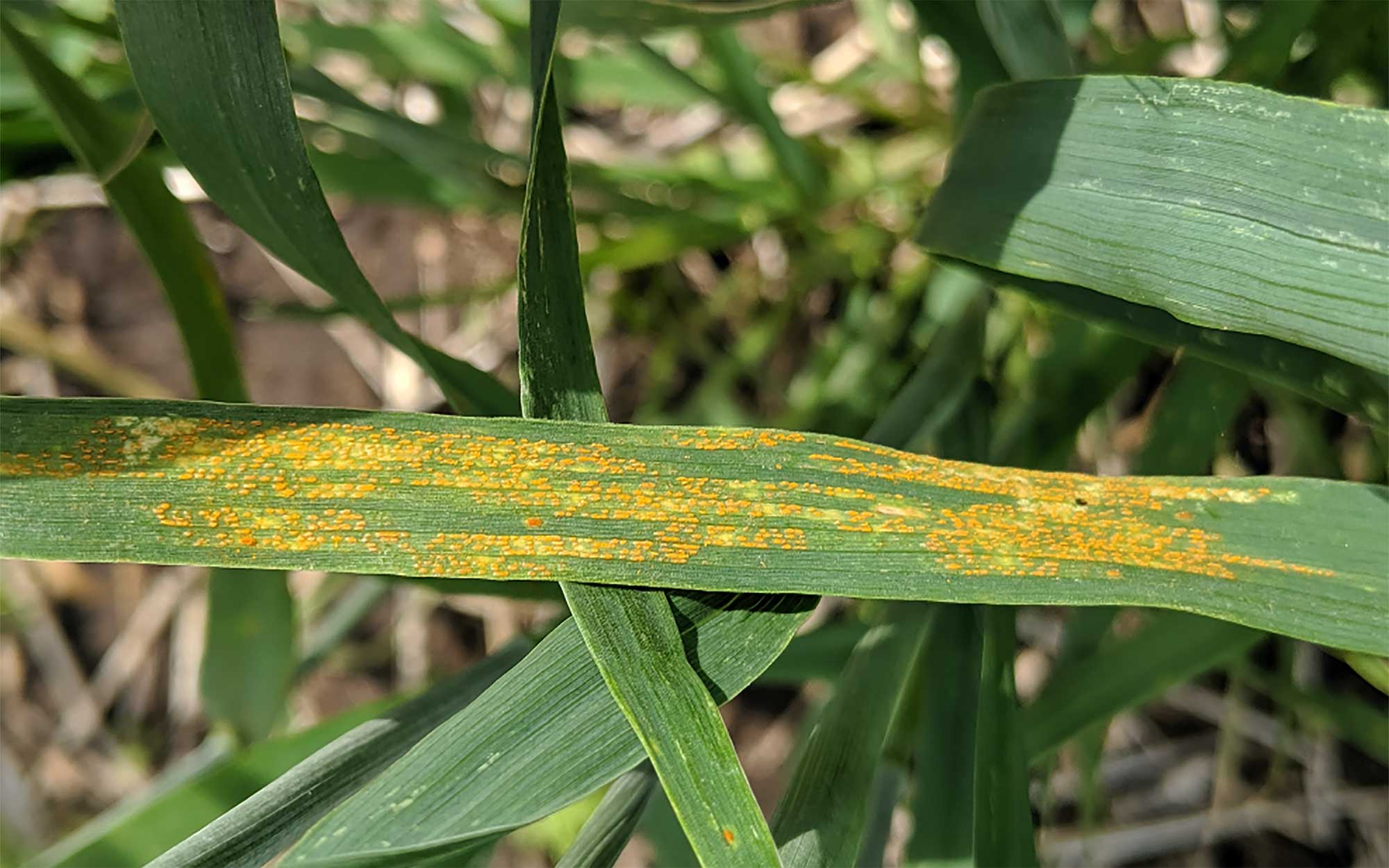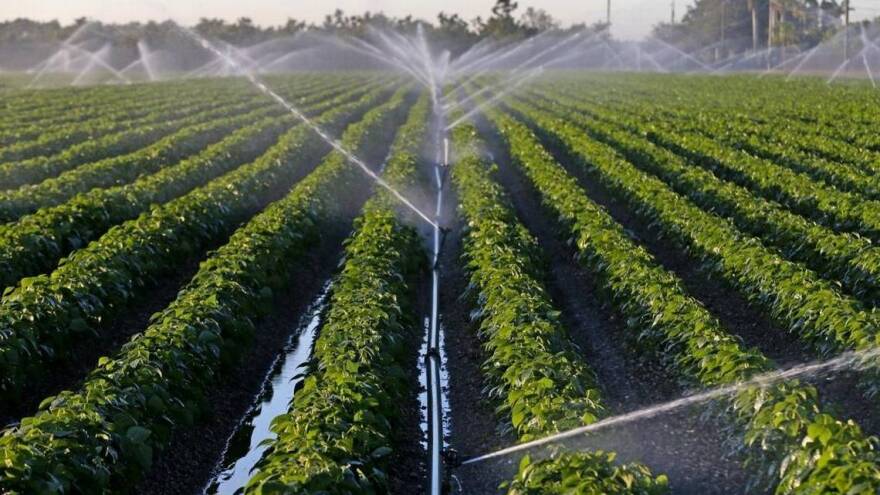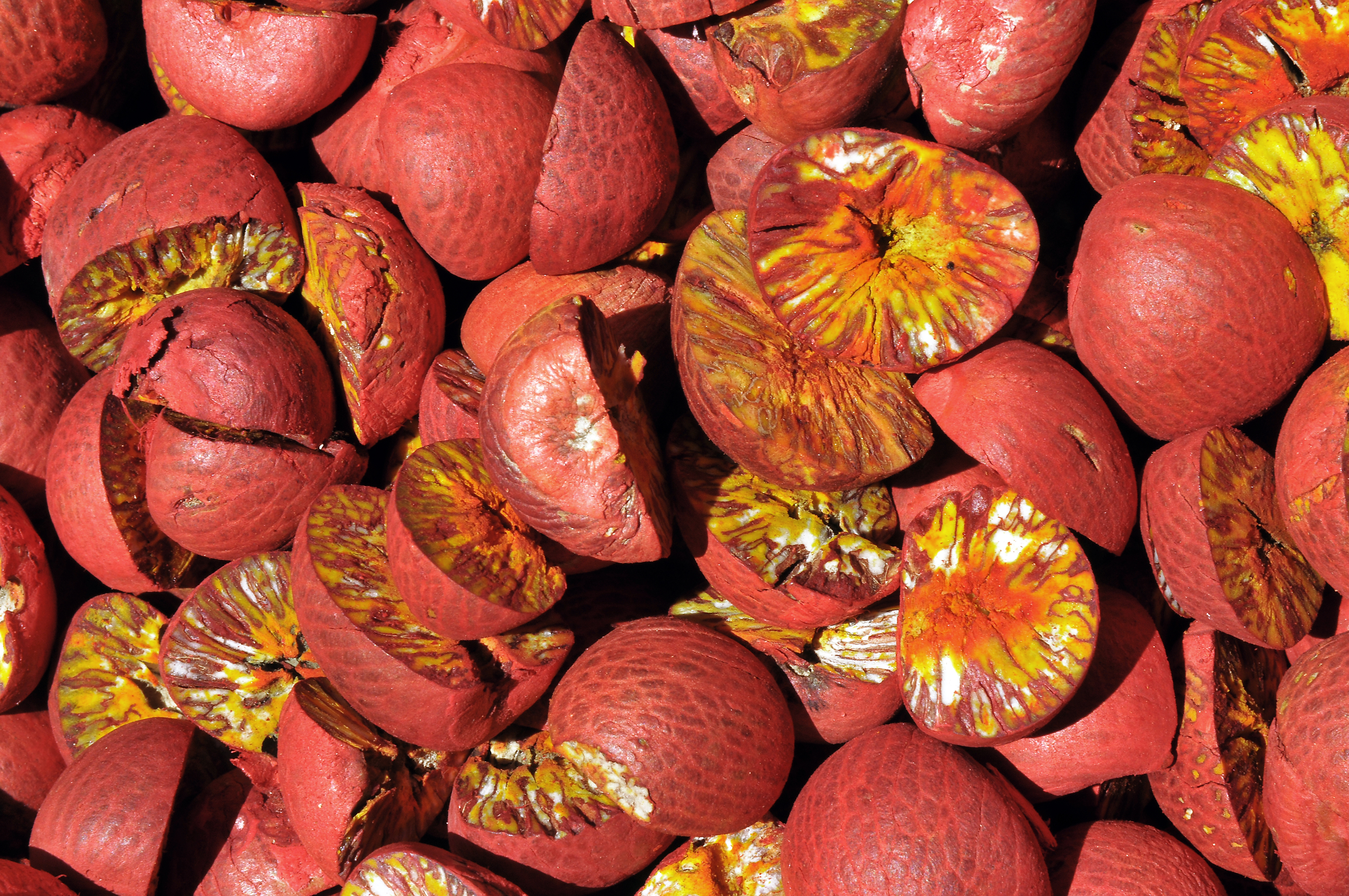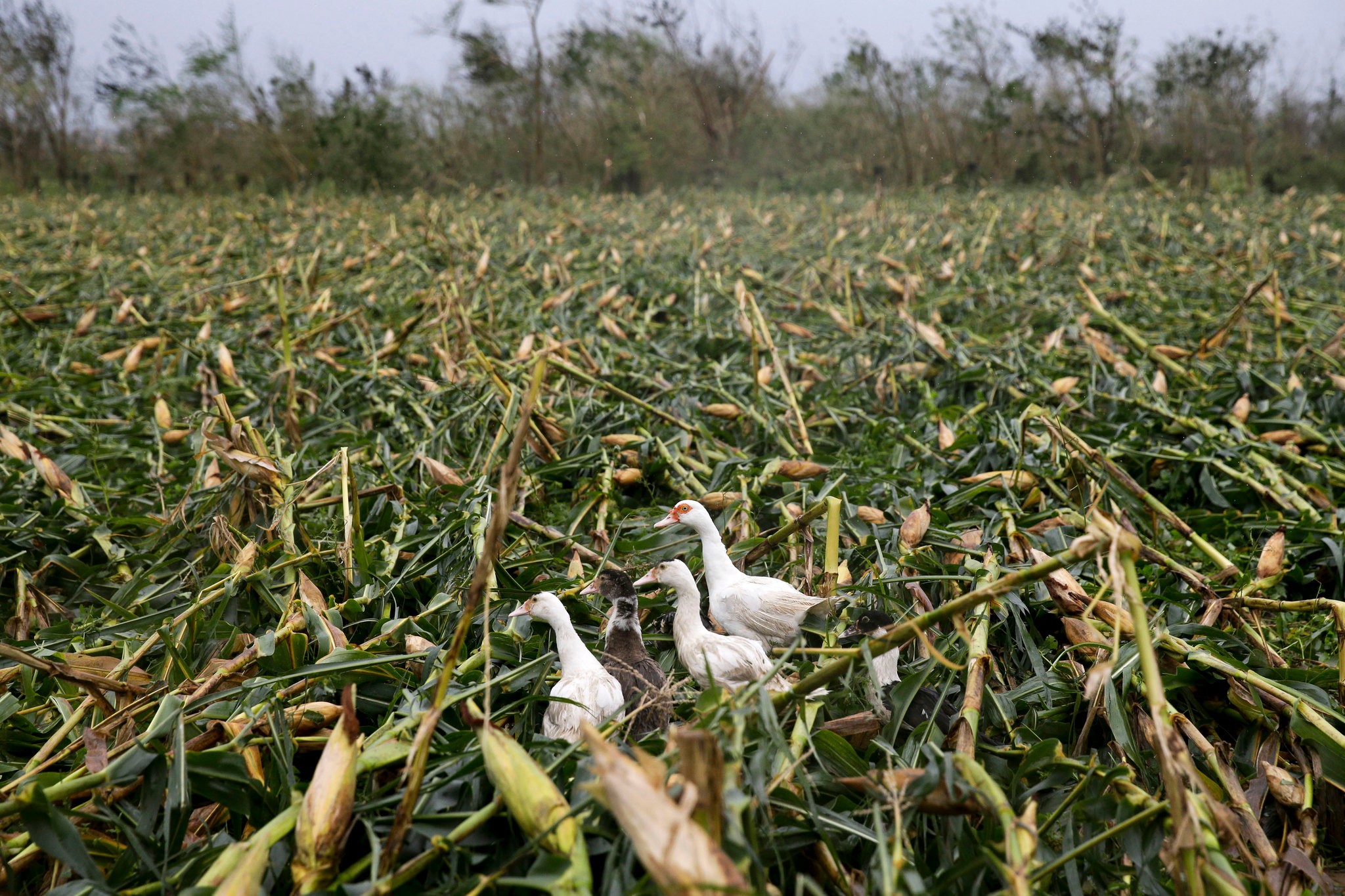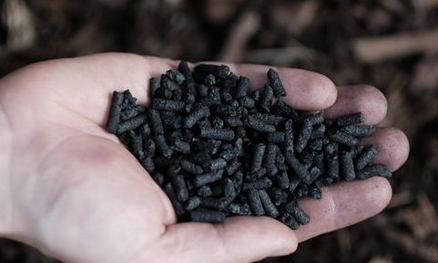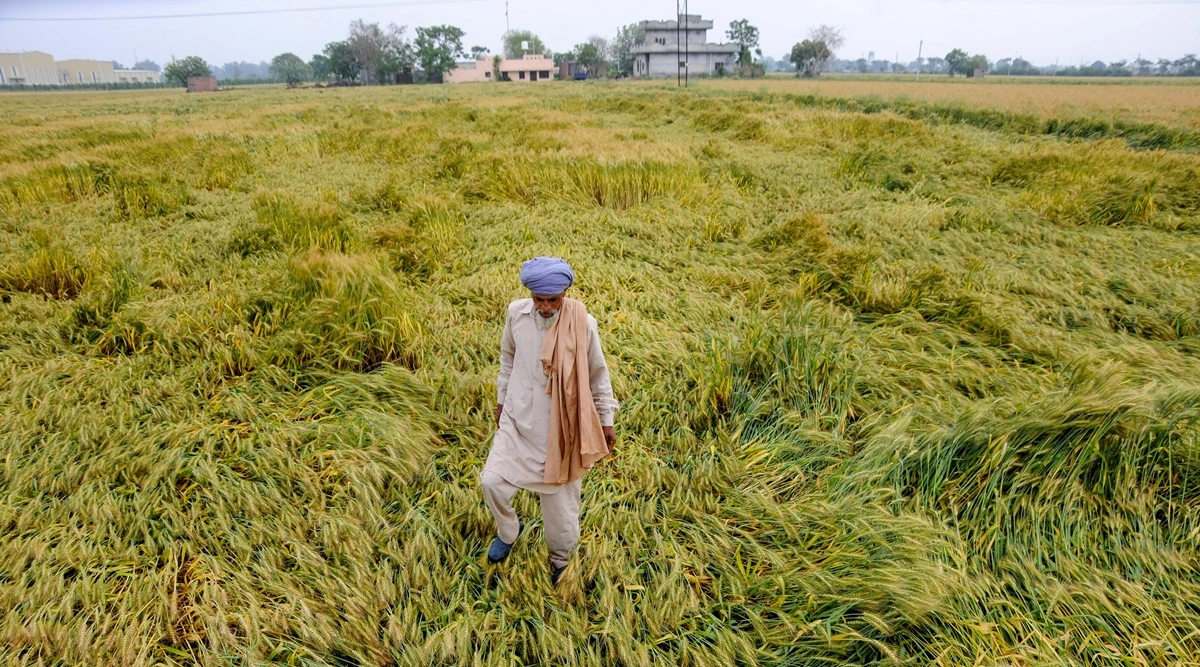The appearance of stripe rust adds insult to injury to this year’s wheat crop, but Kansas growers should scout fields and have their management strategy ready for this yield- and quality-limiting disease. Stripe rust has now been detected in 35 Kansas counties, according to Wheat Ag Pest Monitor.
While most of these observations have been at low or trace levels, the K-State Agronomy eUpdate issued on May 2, 2024, noted, “Up until this point, the disease has largely been limited by lack of moisture.” Scattered showers across the state over the weekend and into the start of the week have reduced that limiting factor.
“Since the eUpdate was published on May 2, the risk of severe disease has elevated in north-central and northwest Kansas,” said Kelsey Andersen Onofre, K-State assistant professor of plant pathology. “We are keeping a close eye on this part of the state.”
Stripe rust develops in cool, humid weather with rapid disease development between 50 and 60 degrees. The disease slows when nighttime temperatures are above 68 degrees or daytime temperatures have highs above 80 degrees for several days.
Stripe rust shows as yellow or orange blister-like lesions arranged in stripes on the plant’s leaves. Timing is important as stripe rust has the highest impact on yield and quality when the crop is still in the flowering or early kernel-filling stages of development. Stripe rust on the upper leaves or flag leaf are of particular concern.
In south and south-central Kansas, the wheat crop has progressed past the optimal window for a fungicide application. According to K-State, the risk of yield loss from stripe rust decreases when the disease is spotted in fields already in the dough stages of grain development. In northwest and north-central Kansas, however, the crop is further behind and more vulnerable.
In addition to limiting yield, Onofre noted that K-State research has seen a three to nine percent decrease in test weight in susceptible varieties under high stripe rust disease pressure, varying between wheat varieties and environments. This impact is important for end-use quality as test weight provides an initial indicator of quality and works as a rough estimate of potential flour yield.
While detrimental to yield and quality, producers can effectively treat stripe rust with foliar fungicides, particularly if applied at earlier growth stages. According to the eUpdate, “K-State research demonstrates that if stripe rust is detected on flag leaves at the heading growth stage, there is a 90% chance your fungicide application will pay off. This is a year when scouting will be critical.”
Producers should also pay close attention to labels and information on the pre-harvest intervals for their preferred fungicides. K-State also has resources available on the most common fungicides.
The K-State agronomy eUpdate provides five questions to help producers decide whether or not to apply fungicide at this time to treat stripe rust:
1. What variety is planted? The wheat industry specifically includes stripe rust resistance in public and private breeding programs, providing built-in genetic resistance in certain varieties. These specific varieties likely would not benefit from a fungicide application. Check Kansas Wheat Variety Guide 2023 for how your varieties are rated for stripe rust resistance.
2. Has stripe rust been detected in the field? Common sense and science agree that if stripe rust is already established in the field, increased disease levels will follow if the weather is right. Pay close attention if stripe rust is present on flag leaves when the crop is heading.
3. Does the field’s yield potential justify a fungicide application? A fungicide can provide a 10 to 15 percent yield boost under moderate to high stripe rust pressure. But, if the disease is not present or the crop is in poor to very poor condition, a fungicide application may not pay off.
4. How much moisture has the field received recently? The eUpdate noted stripe rust shows up in fields about 10 days from when the infection first occurs, so producers should continue scouting fields, especially if they have received rainfall.
5. What is the fusarium head scab risk? If a field has a history of head scab and the current year’s crop is approaching flowering, producers may be able to control both stripe rust and head scab with a single application this year.
Source - https://ruralradio.com


